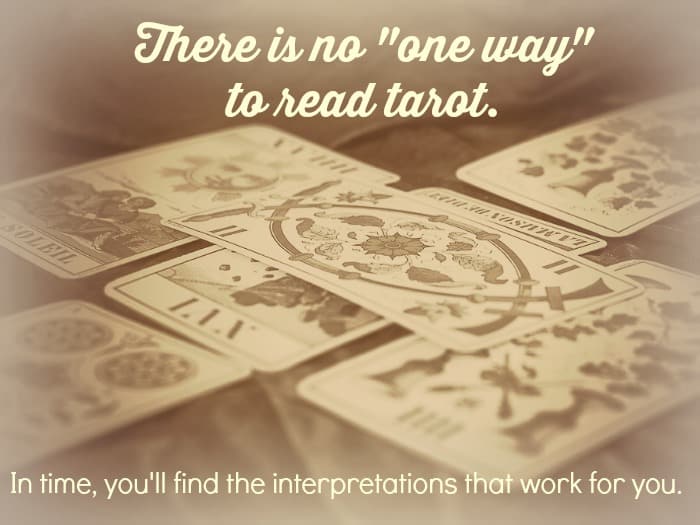The tarot class is humming along when suddenly the Death card comes up.
What does this card say to you?
“According to the book I have, it says it’s about transformation.”
“I think this card is scary. It makes me think someone is going to die. I hate it.”
“That sunrise in the background makes me feel hopeful.”
“I don’t understand why the flag has a big white rose on it.”
“Is something bad going to happen?”
“My mother just passed away a few months ago so this makes me miss her.”
That’s the interesting thing about tarot: the interpretation can be very different, depending on who is looking at it – especially if that person has a strong emotional reaction to the image.
There is never one meaning for a card. The meanings can vary from reader to reader and many things can affect the interpretation:
What other cards are present?
Are you emotionally invested in the outcome?
Have you ever had a “bad experience” from a certain card (8 of Cups was a rough one for me!)?
Do you allow for reversals? If not, do you turn them right side up when they appear?
Do “scary” images frighten you?
Have you only ever read one tarot book, ever?
Are you feeling unwell or are you impaired?
Do you have a prejudice against what is being asked (ex: someone is asking about an affair and you have a bias against cheaters)?
What is being asked (context is EVERYTHING)?
If you want to expand your tarot vocabulary, the best plan of action: do as many readings as possible. Read for a diverse group of people with varied questions and situations. Check out different tarot books. Take classes when you can. Attend conferences. Notice how different cards bring up different feelings in your emotional body. Pay attention to when your own life is affecting your interpretations.
STAY CURIOUS.
And remember: there is no “one way” to read tarot. In time, you’ll find the interpretations that work for you.
Blessings,
Theresa
© Theresa Reed | The Tarot Lady 2014


 I’m Theresa Reed (aka, The Tarot Lady). I’ve been a full-time tarot reader for 30+ years — which, in my industry, makes me pretty badass.
I’m definitely not your average Tarot expert — I drop the F-bomb, I quote rappers, and I’m obsessed with pop culture. Folks come to me for straight-talk + tough-love — without the woo-woo fluff.
I’m Theresa Reed (aka, The Tarot Lady). I’ve been a full-time tarot reader for 30+ years — which, in my industry, makes me pretty badass.
I’m definitely not your average Tarot expert — I drop the F-bomb, I quote rappers, and I’m obsessed with pop culture. Folks come to me for straight-talk + tough-love — without the woo-woo fluff.
You must be logged in to post a comment.